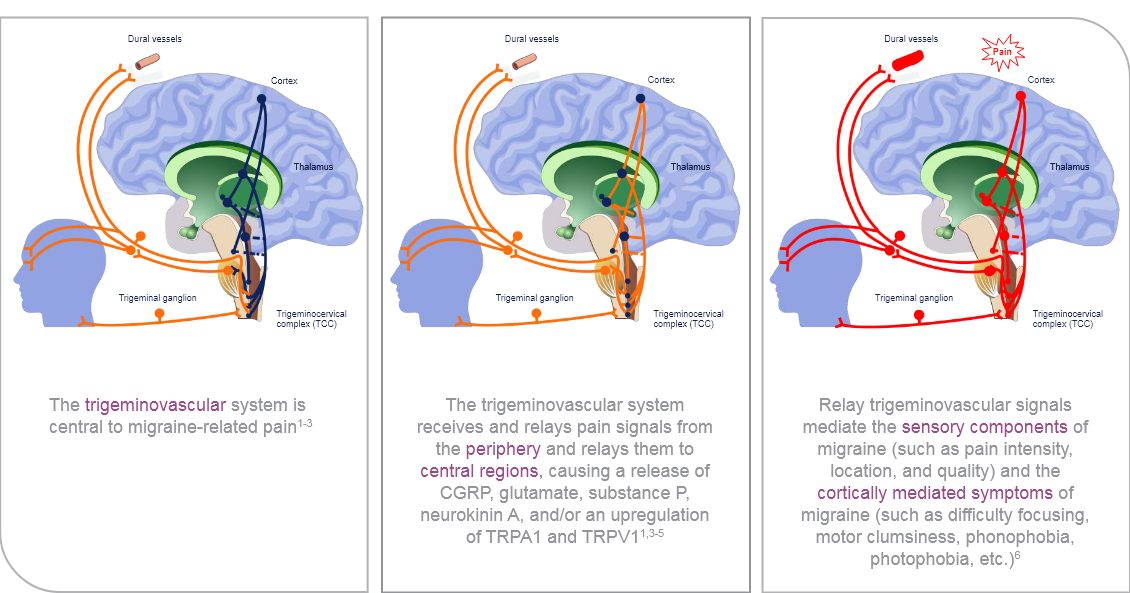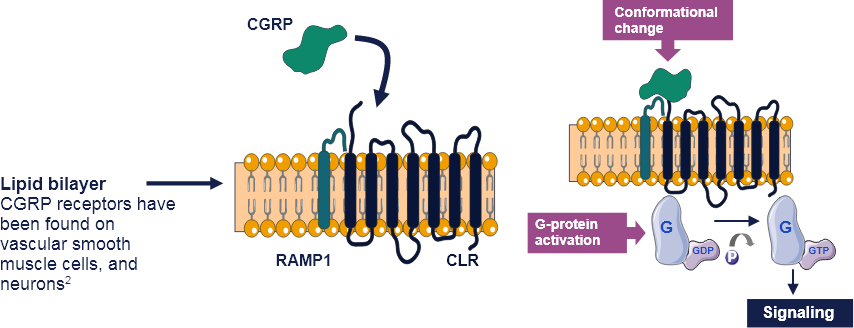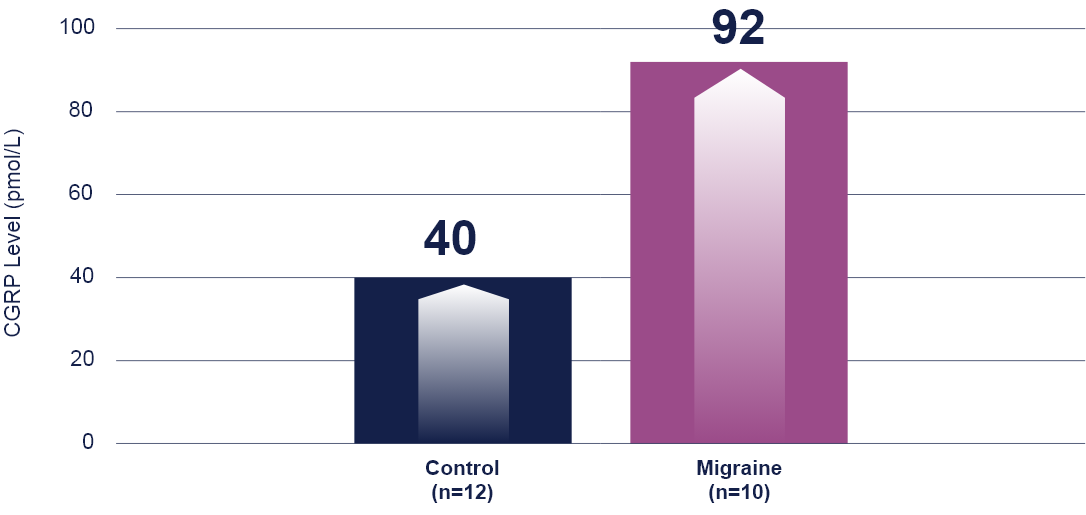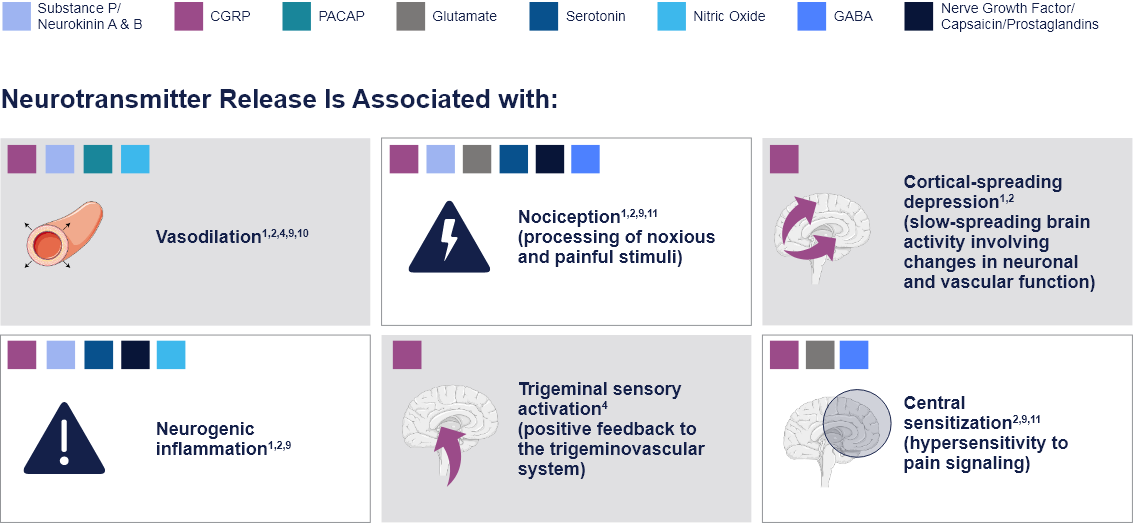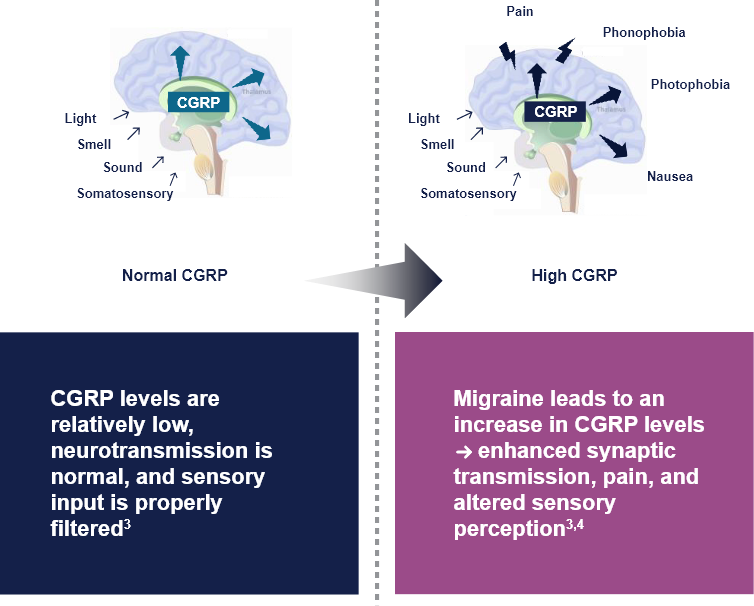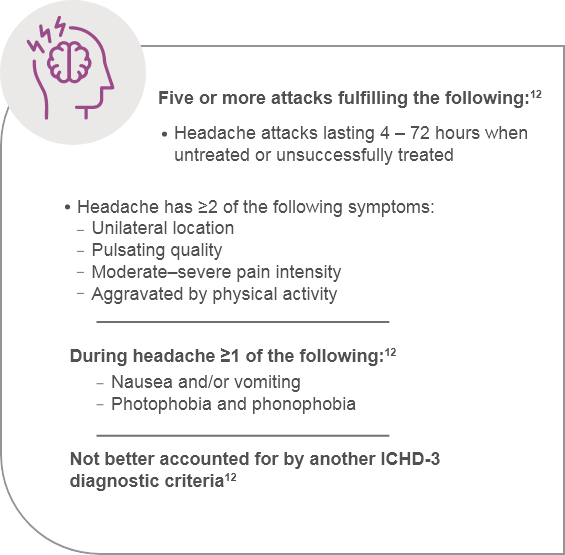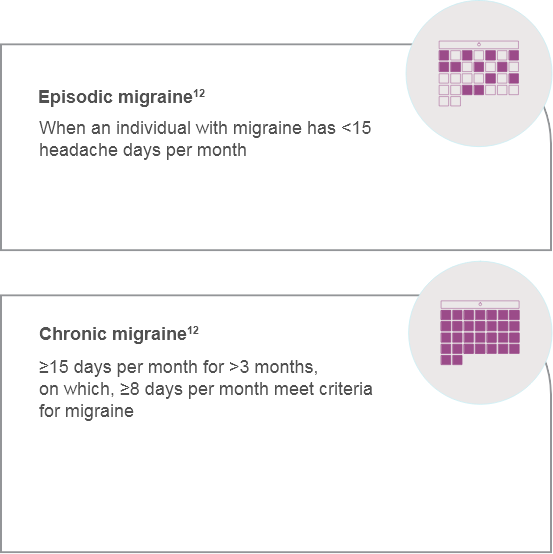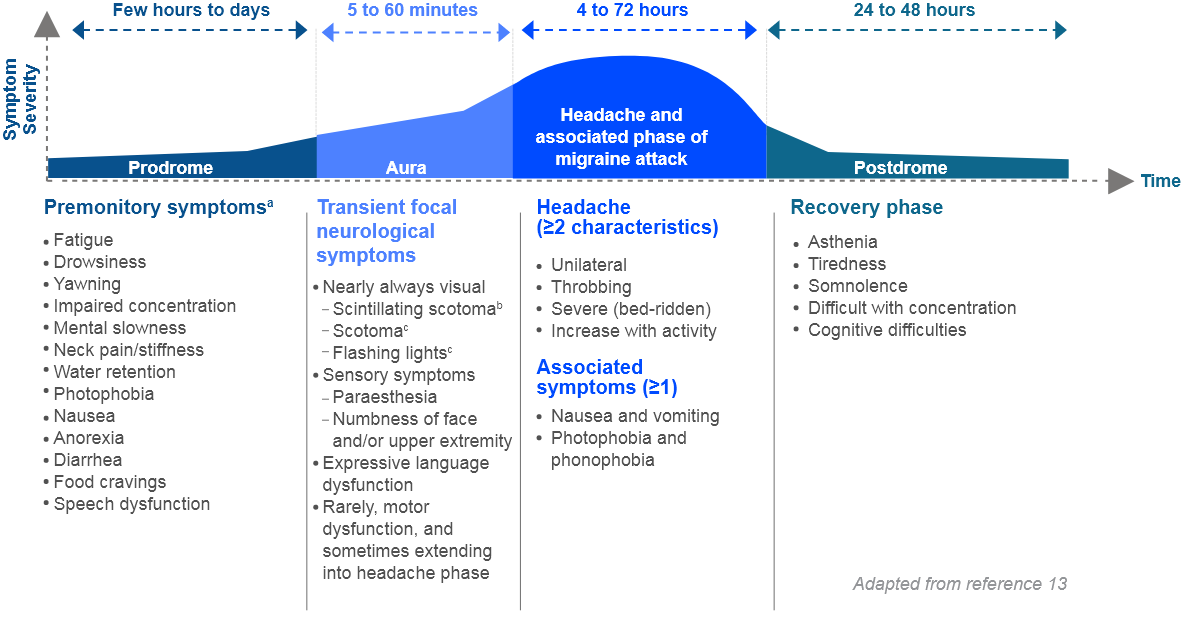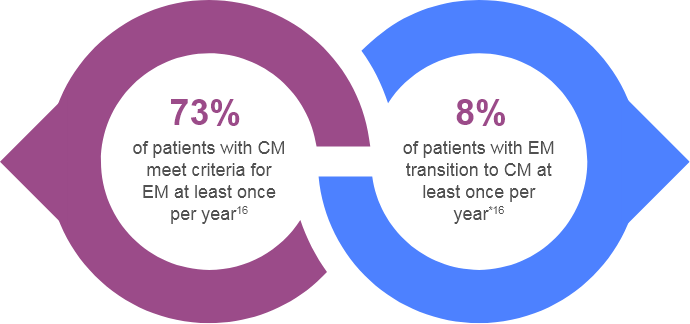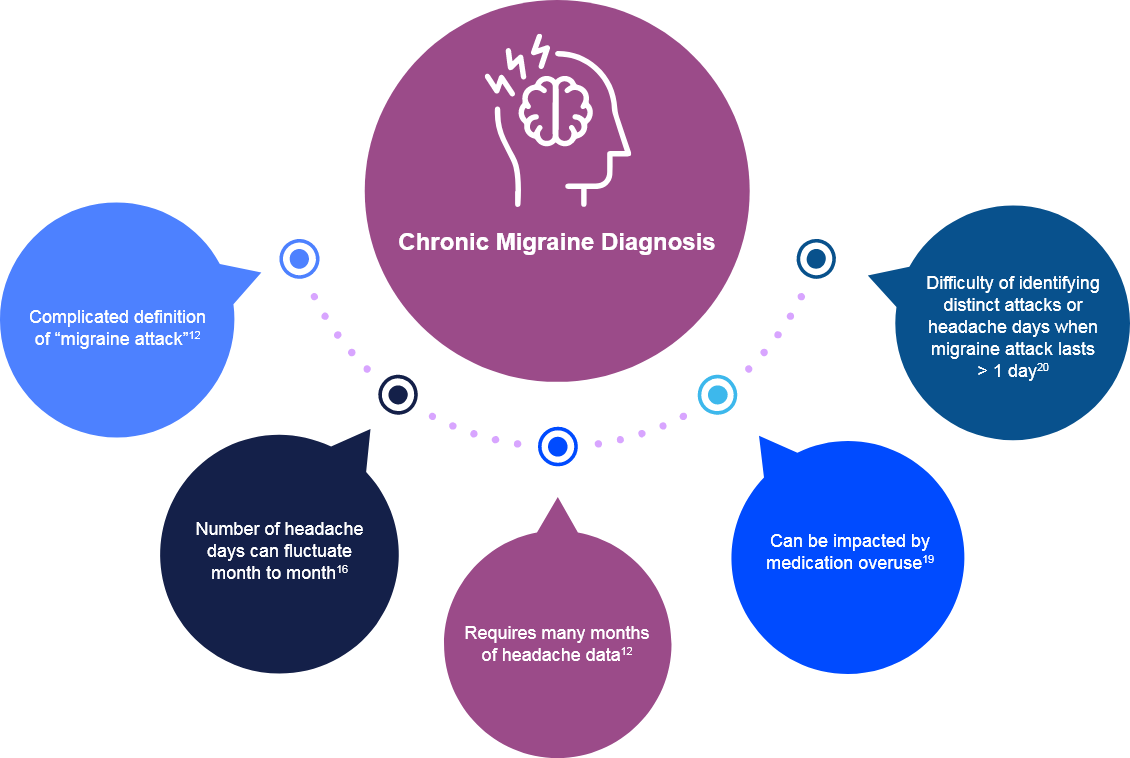UNDERSTANDING MIGRAINE
The Role of CGRP: Key Modulator and Target in Migraine
Trigeminovascular System and Migraine
Migraine Is a Neurovascular Disorder
CGRP: Calcitonin gene-related peptide; TRPA1: Transient receptor potential cation channel ankyrin subfamily member 1; TRPV1: Transient receptor potential cation channel vanilloid subfamily member 1.
CGRP SIGNALING
Receptor/Ligand Binding
CGRP acts by binding to its receptor, which is found on the surface of a range of cell types, including vascular smooth muscle cells, neurons, glial cells, and mast cells.7
The CGRP receptor is a G-protein coupled receptor.
Binding of CGRP to its receptor leads to G-protein coupling and downstream signal activation.2,7
CGRP-Driven Signaling
CGRP: Calcitonin gene-related peptide; CLR: Calcitonin receptor-like receptor; GDP: Guanosine diphosphate; GPCR: G-protein coupled receptor; GTP: guanosine triphosphate; RAMP: Receptor activity-modifying protein.
Frequency of migraine is fluctuant, and people can transition between chronic and episodic migraine.
Implications for clinical practice
- Diagnosis is intended to reflect a stable set of conditions, but migraine fluidity makes this difficult16
- Migraine pathophysiology is unlikely to change with the number of headache days16
- Consideration of factors, such as personal burden, is important to inform treatment choice17,18
*Risk factors associated with an increased risk of CM onset include headache features, depression, allergic rhinitis, asthma, and poor acute treatment optimization.
CGRP: Calcitonin gene-related peptide; ICHD-3: International Classification of Headache Disorders; CM: Chronic migraine; EM: Episodic migraine.
References
1. Raddant A and Russo AF. Expert Rev Mol Med. 2011;13:e36.
2. Edvinsson L. BJ Clin Pharmacol. 2015;80:193–9.
3. Russo AF. Ann Rev Pharmacol Toxicol. 2015;55:533–52.
4. Goadsby PJ, et al. Physiol Rev. 2017;97:553–622.
5. Aurora SK, et al. Headache. 2017;57(1):109-125.
6. Ferrari MD, et al. Nat Rev Dis Primers. 2022;8(1):2.
7. Bell I. J Med Chem 2014;57:7838–58.
8. Goadsby PJ, et al. Ann Neurol. 1990;28:183–7.
9. Malhotra R. Ann Indian Acad Neurol. 2016;19(2):175-182.
10. Edvinsson L, et al. J Headache Pain. 2018;19(1):21.
11. Park CG, et al. Sci Rep. 2022;12(1):6921.
12. Headache Classification Committee of the International Headache Society (IHS). Cephalalgia 2018;38:1–211.
13. Ferrari MD, et al. Nat Rev Dis Primers. 2022;8(1):2.
14. Buse DC, et al. Headache. 2019;59:1286–99.
15. Chalmer MA, et al. Cephalgia. 2019;40:399–406.
16. Serrano D, et al. J Headache Pain. 2017;18:101.
17. Ever S, et al. Eur J Neurol. 2009;16:968–81.
18. Ailani J, et al. Headache. 2021;61:1021–39.
19. Becker WJ, et al. Headache. 2017;57(9):1471–1481.
20. https://migrainebuddy.com/migraine/migrainesymptoms-the-stages-of-a-migraine. Accessed January 22, 2021.



